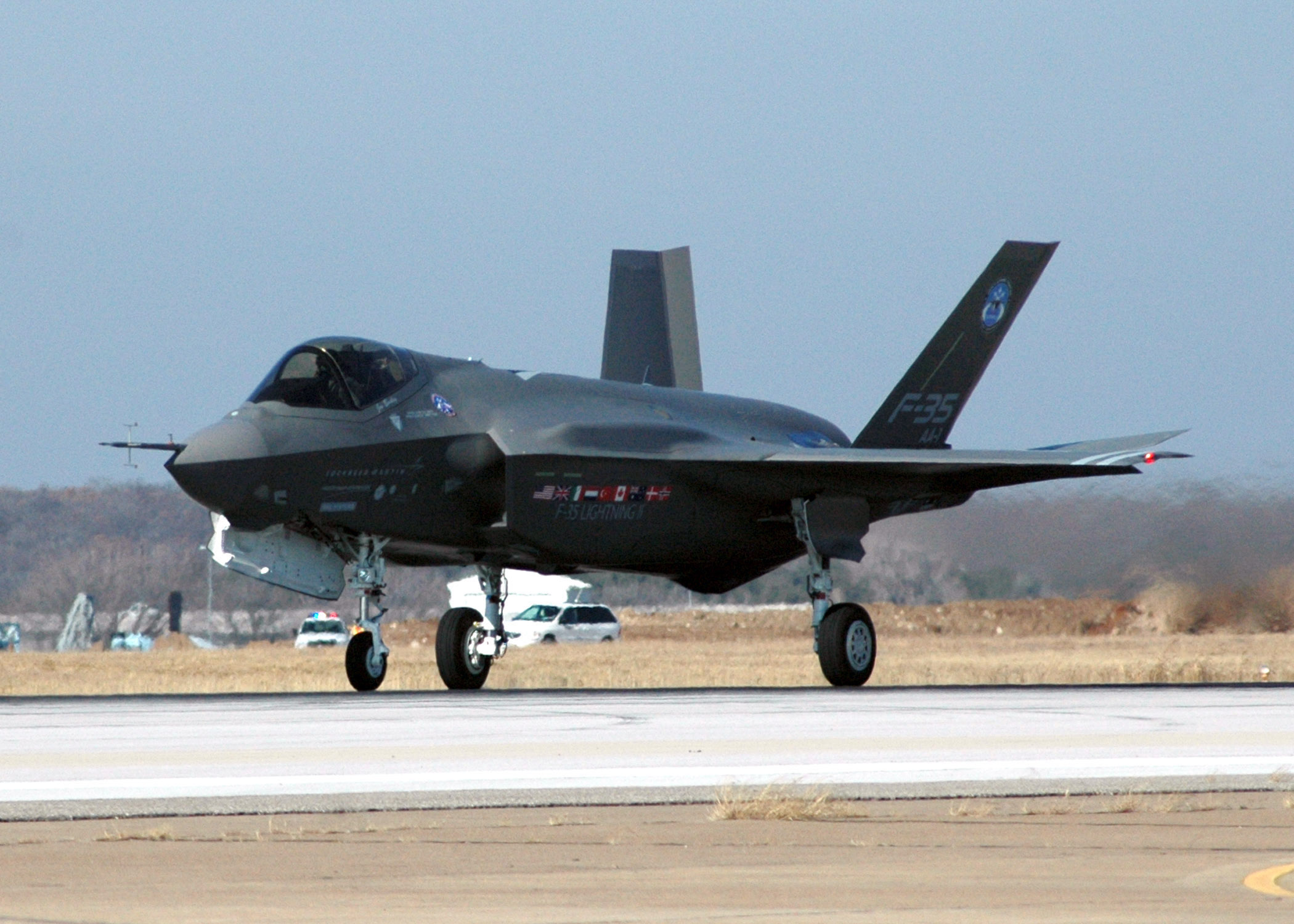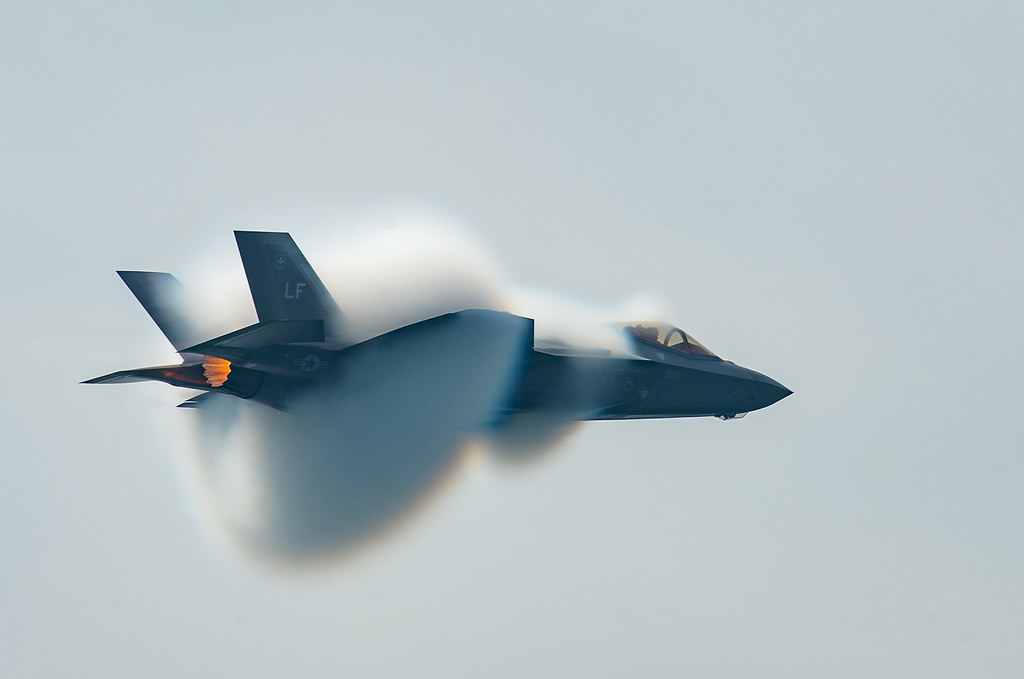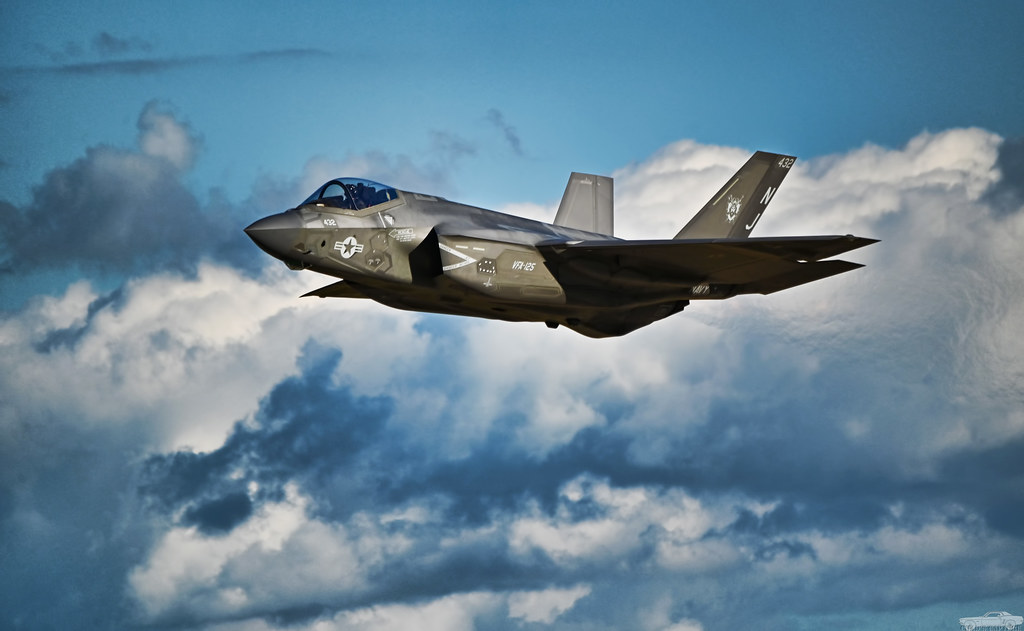
Fort Worth, Texas (Dec. 15, 2006) – The F-35 Joint Strike Fighter Lightning II, built by Lockheed Martin takes off for its first flight to test the aircraft’s initial capability at Joint Reserve Base Fort Worth. The US Defense Department and eight other allied countries have contracted Lockheed Martin as part of the Joint Strike Fighter program, which was designed to maximize efficiency and minimize the life cycle, costs of a future multi-role fighter jet. U.S. Navy photo by Mass Communication Specialist 2nd Class D. Keith Simmons (RELEASED)
In a strategic move to counter Iranian aggression and Russian interference in the Middle East, the U.S. Air Force’s F-35 Lightning II stealth fighters have concluded their mission.

These advanced aircraft were instrumental in bolstering maritime security in the Strait of Hormuz and addressing Russian operations in Syria.

This deployment of the F-35s, which commenced on July 26, was a rapid response by the Pentagon following Iranian attacks on commercial shipping around the Strait of Hormuz—a critical maritime passageway where a significant portion of the world’s oil is transported.

The F-35s operated as part of the 421st Air Expeditionary Squadron and their presence in the region bolstered U.S. capabilities to conduct combat air patrols over the Strait, a task underscored by Air Forces Central (AFCENT) commander Lt. Gen. Alexus G. Grynkewich as essential to deter any further Iranian actions against maritime shipping“What the F-35s did is they gave us additional capacity.”

The advanced fighter jets, belonging to the 388th Fighter Wing based out of Hill Air Force Base, Utah, concluded their mission in late September. Lt. Gen.

Grynkewich highlighted the impact of the F-35s, stating, “What the F-35s did is they gave us additional capacity.”

With their superior stealth and sensor capabilities, the F-35s enhanced the U.S. military’s ability to conduct operations in both Iraq and Syria while increasing support for Navy operations in the strategically vital waters near Iran.

The deployment also had the benefit of curbing Russian assertiveness. Grynkewich noted a change in Russian tactics, as the advanced fighters discouraged Russian warplanes from aggressive maneuvers against American assets in the region.

This development came after a period of concerning interactions that included Russian fighters damaging U.S. MQ-9 drones with flares.

Following the deployment of the F-35s and the release of footage showing Russian harassment, Russia has moderated its tactics and has become less aggressive., with Grynkewich welcoming the “shift in behavior.”

Furthermore, the U.S. air operations over Syria have also been bolstered by coalition partners, including the French and British.

“We are still under danger of terrorist attack in our capitals or in our land,” Gen. Stéphane Mille, Chief of the French Air and Space Force, told reporters in September. “We are flying together.”

Despite the withdrawal of the F-35s, U.S. military presence in the Middle East remains robust, albeit more modest compared to previous years of engagement in Iraq and Afghanistan.

The U.S. continues to have F-16s and A-10s in the area, ready to respond to any emergent threats.

As Lt. Gen. Grynkewich put it, “My view is that deterrence is temporal,” emphasizing the U.S.’s strategic approach of surging forces in response to specific threats, showcasing America’s unwavering commitment to the region’s security.
Relevant articles:
– F-35s Leave Middle East After Deployment to Deter Iran and Russia, Air & Space Forces Magazine
– US to send F-35 and F-15 jets to the Middle East to deter expansion of fighting beyond Israel’s borders, businessinsider.com
– 35I to shoot down cruise missile, a first for Joint Strike Fighter, breakingdefense.com
– F-35s Arrive in CENTCOM Amid Threats from Russia, Iran, Air & Space Forces Magazine, Jul 26, 2023

